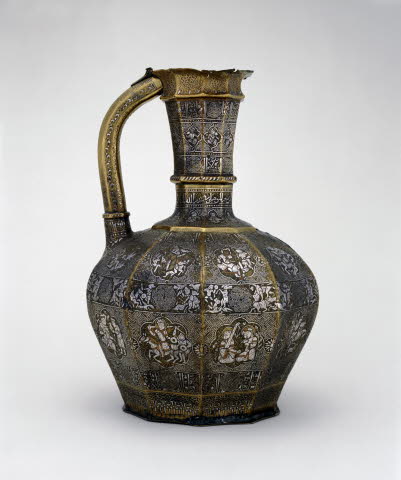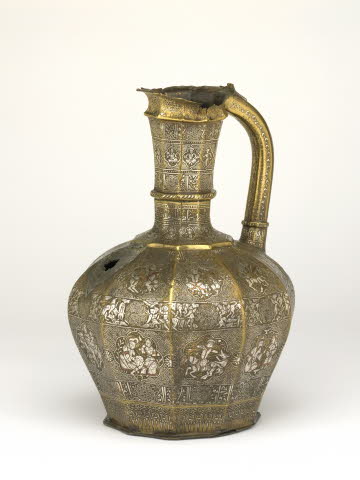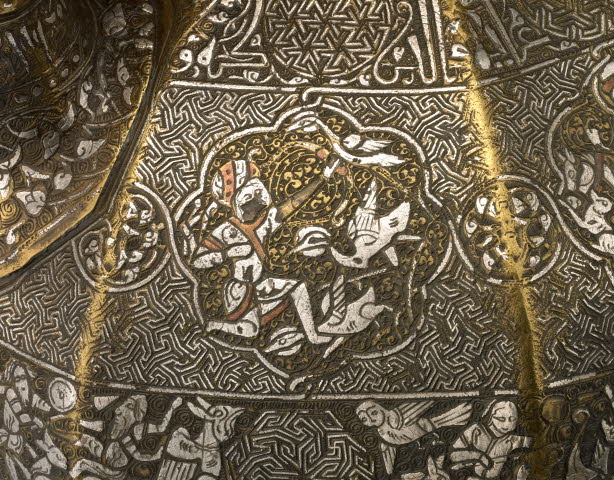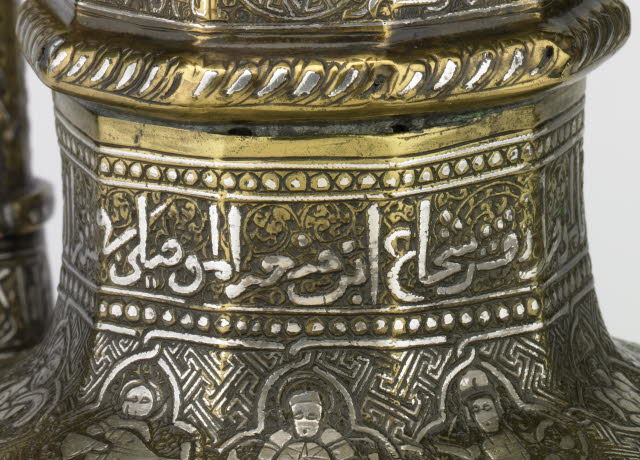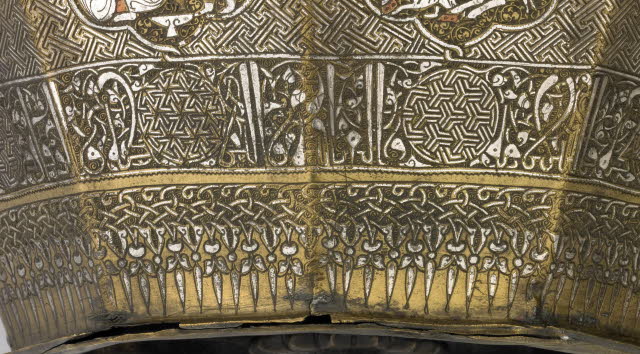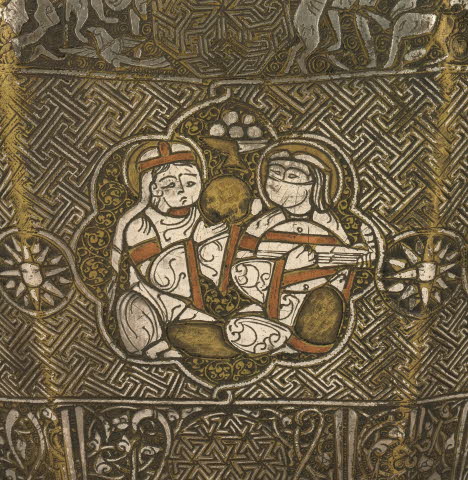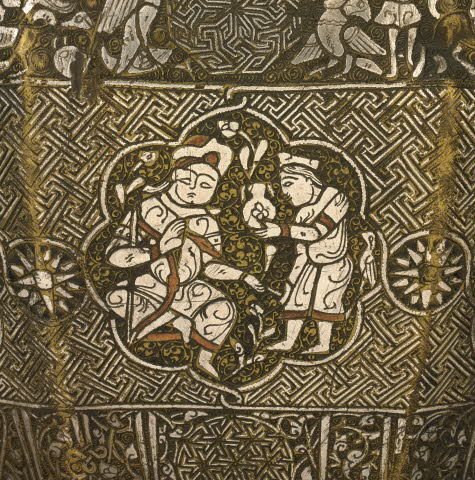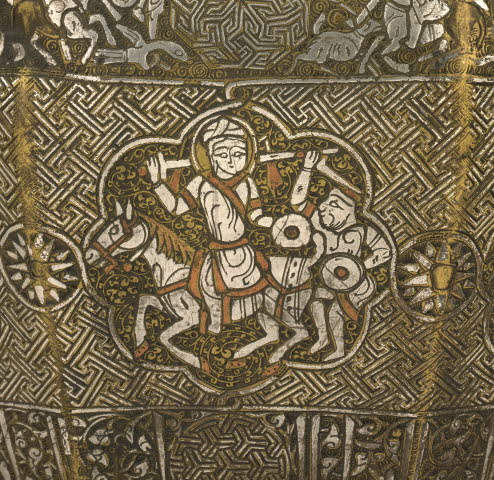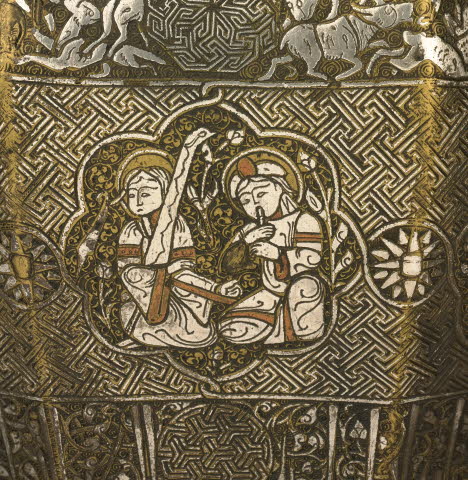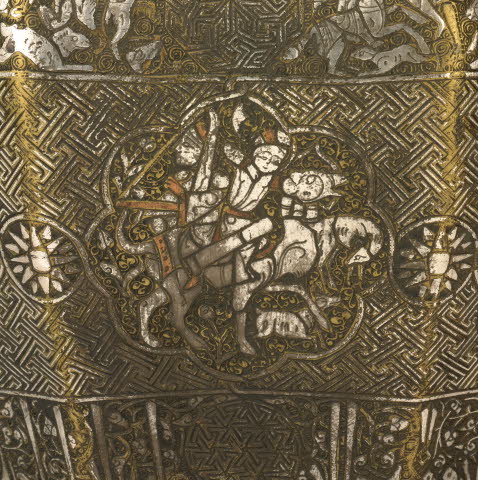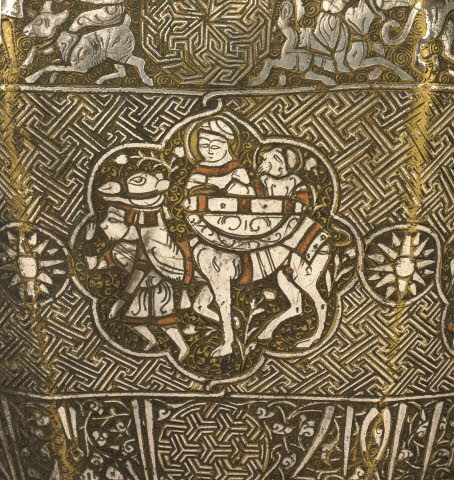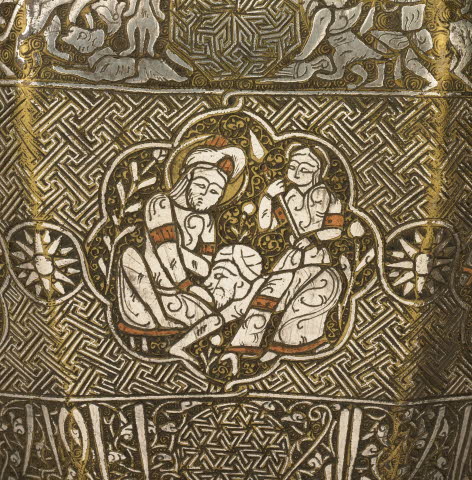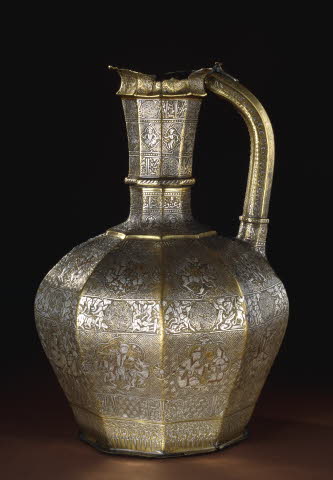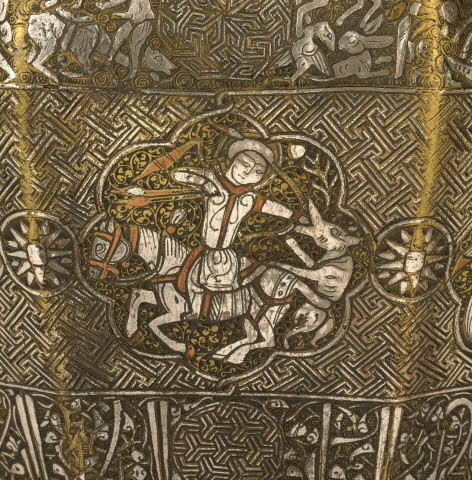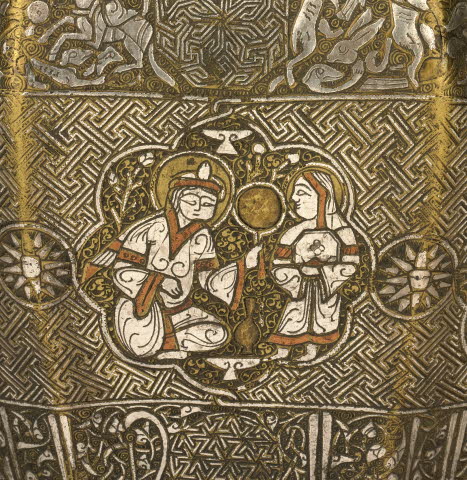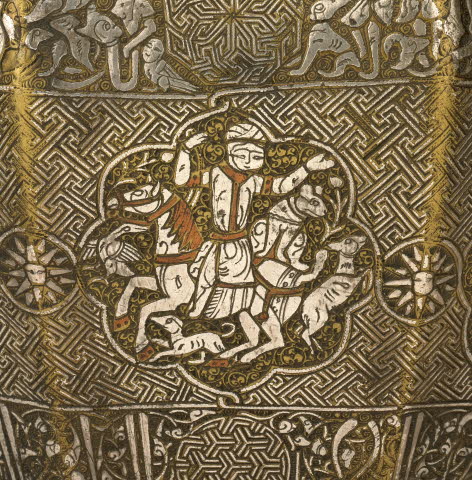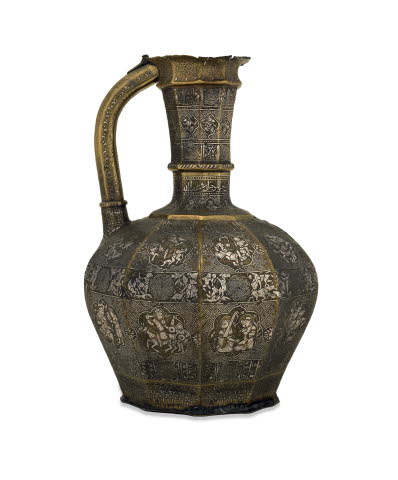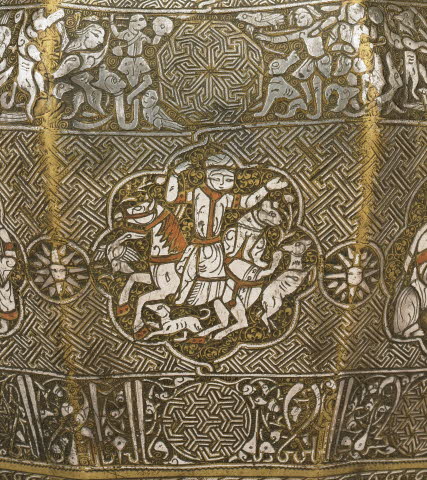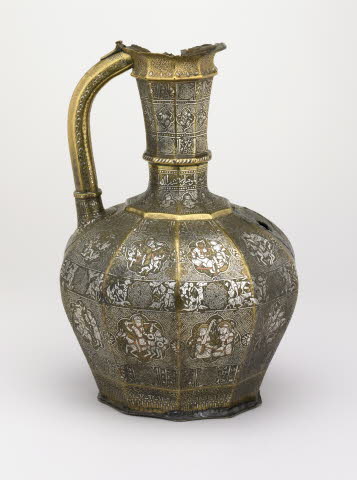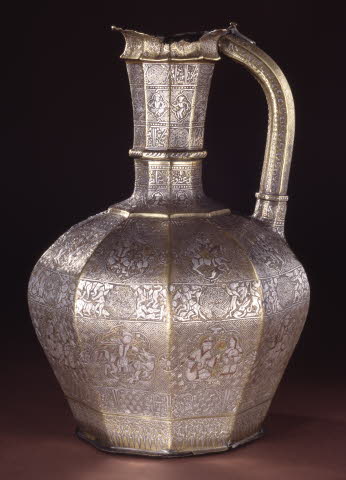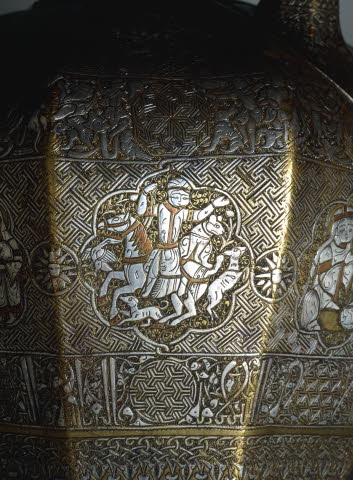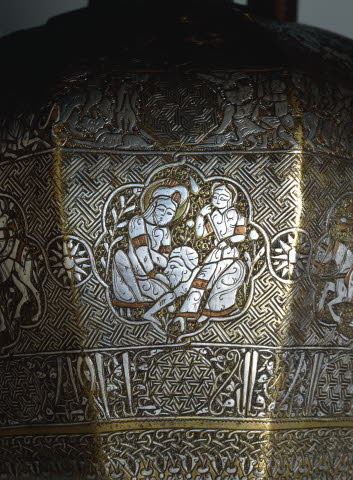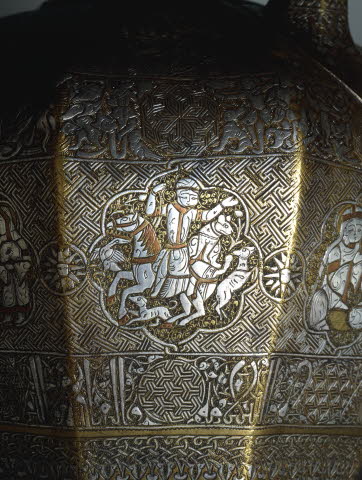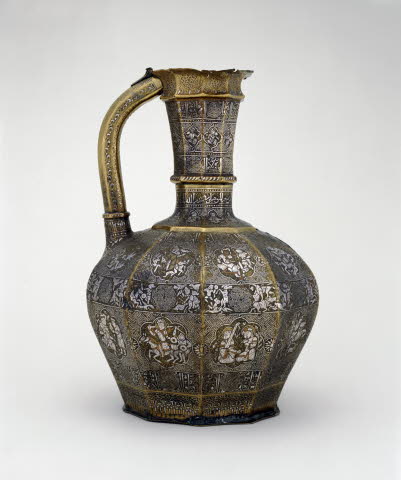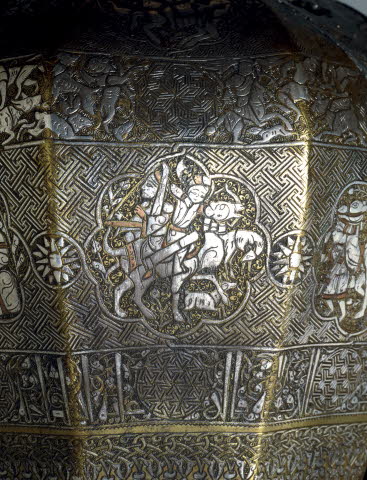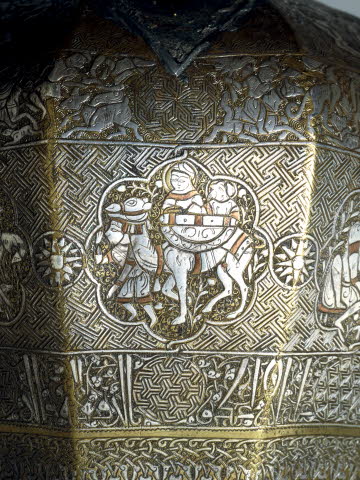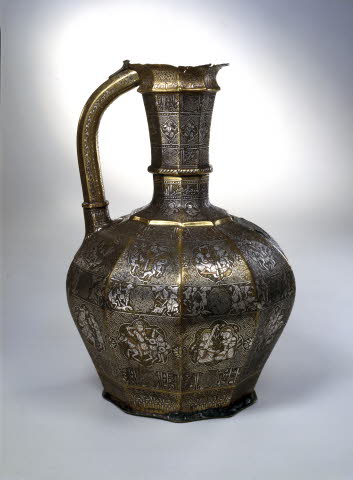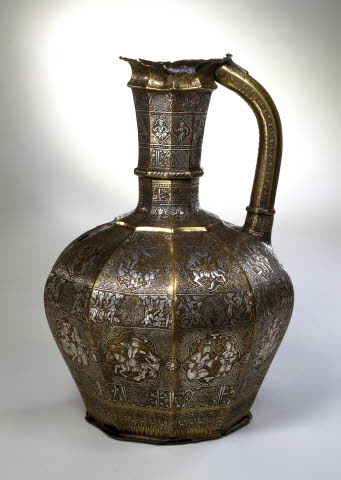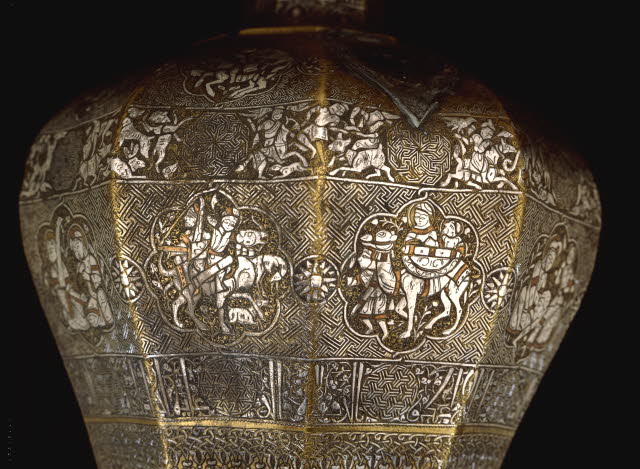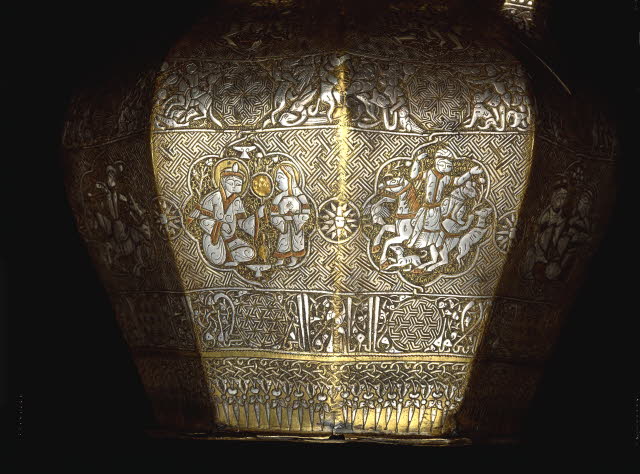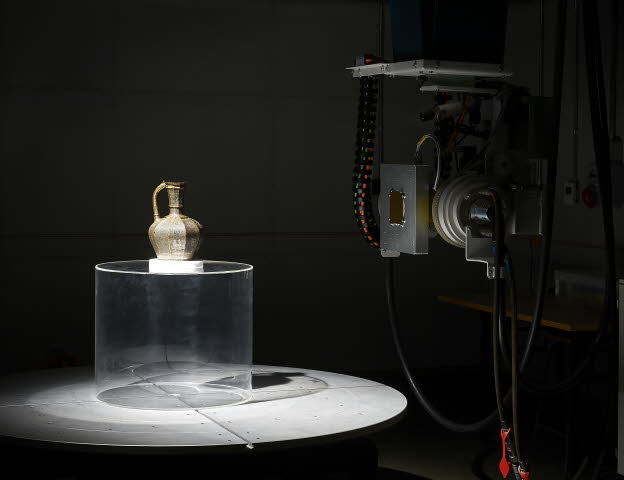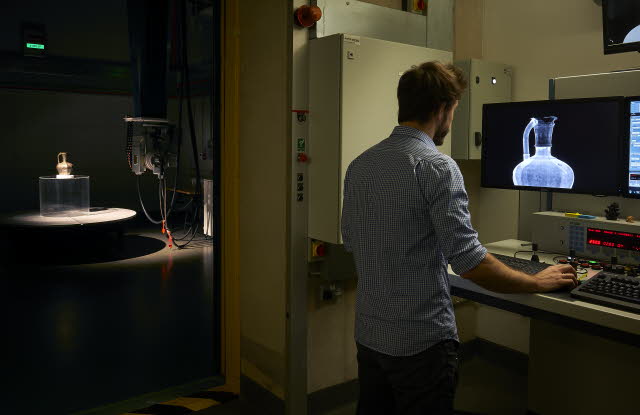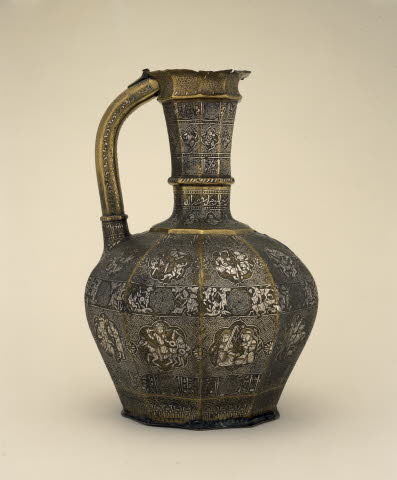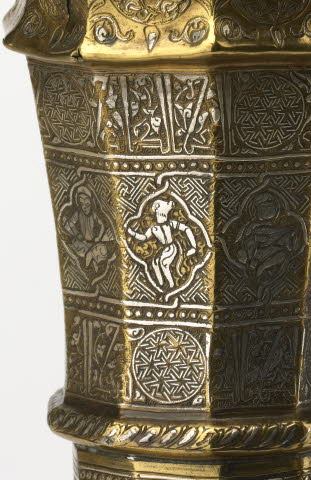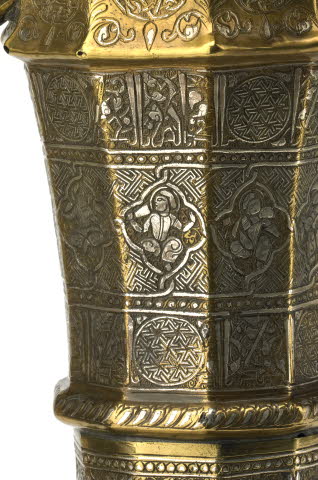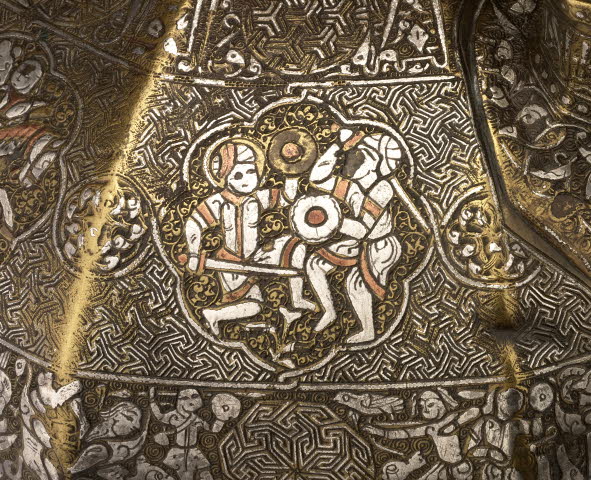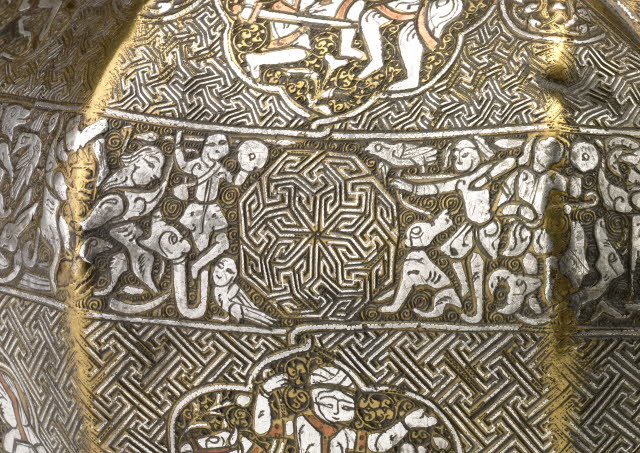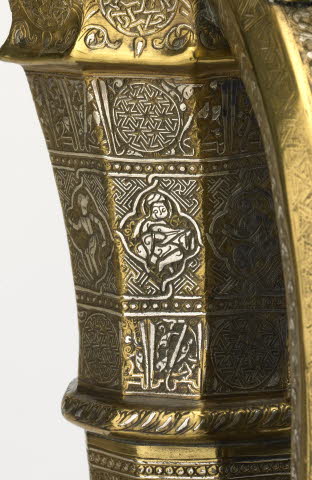The Blacas ewer (Object)
BackDescription:
Brass ewer engraved and inlaid with silver and copper. Made of sheet brass hammered to form a faceted body. Fine silver wires are worked into intricate grooved lines, and small pieces of silver and copper are set in recesses cut into the brass. The designs include inscriptions and panels with various figural images (e.g. hunting, battles, courtly entertainment) on a background filled with geometric designs. Missing spout and foot.
Object type: | ewer |
Museum number: | 1866,1229.61 |
Culture/period: | Middle Islamic |
Date: | April 1232 (Rajab 629 AH) |
Production place: | Made in: Mosul |
Materials: | brass, silver (inlay), copper (inlay) |
Technique: | engraved, inlaid |
Dimensions: | Height: 30.40 cm Width: 22.00 cm Depth: 21.50 cm |
Inscriptions: | Inscription details: inscription Inscription quoted: Inscription transliteration: Shuja` ibn Man`a al-Mausili Inscription note: name of maker |
Location: | 8 |
Exhibition history: | Exhibited: 2016, April-July, New York, Metropolitan Museum of Art, The Great Age of the Seljuqs 2014 20 Feb-18 May, London, Courtauld Gallery, 'Court and Craft in Medieval Mosul: A Masterpiece of Arab Metalwork' 2012 24 May-30 Sep, London, BM, 'The horse: from Arabia to Royal Ascot' 2011 31 Mar-4 Jul, Lyon, Musée des Beaux-Arts, 'Le Genie de L'Orient' 2010 29 May-15 Oct, USA, Kentucky Horse Park, 'A Gift from the Desert' 2001-2002 22 Oct-10 Mar, Paris, Institut du Monde Arabe, 'L'Orient de Saladin au temps des Ayyoubides' 1996, 'Furusiyya' (cancelled) |
Subjects: | domestic object |
Acquisition names: | Purchased from: Louis, Duc de Blacas d'Aulps |
Acquisition date: | 1866 |
Curator's comments:
The ewer is named after the Duc de Blacas whose collection was acquired by The British Museum in 1866. The designs around the body depict scenes of contemporary courtlife. These include a horseman out hunting with a cheetah seated on the rump of his horse and a lady choosing jewels from a casket held by her maid while admiring her reflection in a mirror. One medallion contains a depiction of Bahram Gur out hunting with Azade his favourite musician, in a scene from Firdausi's Persian epic the Shahnama ('Book of Kings'). Azade plays the harp on the back of the camel while Bahram Gur tries to impress her by shooting the foot of a deer to its ear with a single arrow (Azade was not sufficiently impressed and was then thrown to the ground and trampled to death). Another medallion shows a wealthy woman in a camel-litter attended by two servants. Although the name of the craftsman Shuja' ibn Man'a does not appear on any other surviving object, he is known to have come from an important Mosul family. For the importance and legacy of the Mosul school of metalwork see Raby, Julian, 2012, ‘The Principle of Parsimony and the Problem of the ‘Mosul’ School of Metalwork,’ in Venetia Porter & Mariam Rosser-Owen (eds), Metalwork and Material Culture in the Islamic World: Art, Craft and Text. Essays Presented to James W. Allan, London, pp. 11–87.
